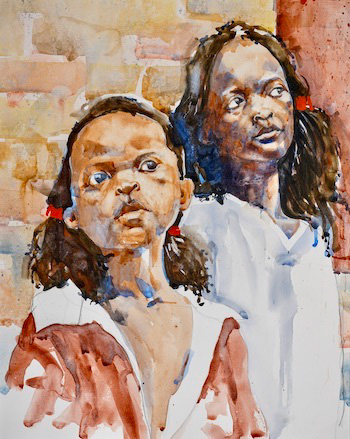Violence
 Spending time with Helder on the front porch of his Kentucky-style cabin overlooking the meadow —wisps rising as the morning sun warms—was to be at peace. He expected nothing from me. He competed with none; no one had anything he needed, and he owed nothing but Love. But, it was not always so.
Spending time with Helder on the front porch of his Kentucky-style cabin overlooking the meadow —wisps rising as the morning sun warms—was to be at peace. He expected nothing from me. He competed with none; no one had anything he needed, and he owed nothing but Love. But, it was not always so.
Helder grew up in poverty on the wrong side of the tracks for most of his childhood, and the streets were mean. He describes the guys he hung with as artists and athletes, the good guys, who were aware of the threat posed by ethnic gangs, and the bad guys, who searched religiously for new targets for their disdain—which justified their sometimes violent attention. The first drive-by shooting he heard about was directed at him while walking home late at night when he was a junior in high school. They weren’t able to hit him.
It was in that environment that Helder learned street wisdom—how to stay alive. He fought his way through high school, and his survival technique when confronted was to strike first, fast, and hard—ending the fight before it could get started. But he unintentionally became the one that every tough guy who wanted to prove himself needed to fight. Although he bled quite a bit, he never lost, but hurt many boys. Through his care for military veterans, he learned he suffered from PTSD. He was vigilant in crowds, always knowing where he was relative to others, and sat with his back to the wall.
Once converted to the Love of Her, his fear for his life was exchanged for an understanding of his own death that was more than simply the bloody ending of a life of insecurity, fear, and worry. A peace outside of time and space settled over him. When death was no longer the future event to be managed but a liminal space in the evolution and consummation of all he had come to embrace, he could rest in Her. He was no longer alone in the universe. He was Home. And safe.
• • •
“So then, Helder, are you a pacifist?”
“No. I think not. Let me explain.”
Pacifist?
Pass,
Their enlightened communities permitted none of the earliest followers of Jesus to be soldiers until the church was consumed by and became the Roman Empire in 380 AD. They took Jesus at Her word and so were literally non-violent. Since Emporer Constantine was now the head of the church and since Christianity was now the official religion of the Roman Empire, the first thing he did was to have crosses painted on the shields of his soldiers.
Rabbi Jesus teaches us non-violence. Violence is not the will of our Father. I admire the work of Gandhi, Martin Luther King, Nelson Mandela, and Bishop Tutu with the Truth and Reconciliation Commission, who all learned from Jesus. I endorse non-violence as my lifestyle choice, the way Jesus taught us. I submit to his teaching of “turn him the other cheek also,” so, in my best moments, I can picture a scenario where I am assaulted or insulted and refuse to defend myself even to the point of death. I pray that I might be courageous like Jesus and would rather be killed than to kill. And I can see how that might positively influence an aggressor’s conscience and perhaps produce repentance. That works. And yet, I am not a Pacifist.
• • •
I love and trust Rabbi Jesus, but I can envision—perhaps due to how I grew up—circumstances in which I would become violent and suddenly harm someone in the name of goodness. I trust and pray—” Lead me not into temptation, but deliver me from evil” —that I am never in the position to need to choose to hurt someone ever again, but the violence in me lies close at hand.
And I know…that if it were within my power to prevent, even if by force, evil from harming a vulnerable innocent, I would not hesitate to do whatever it took to guard and protect one of Her little ones. To hesitate would be ungodly, would be cowardice, and I could never again face myself, my Creator, or the innocent one who was harmed because I stood by, watched, and offered encouraging words.